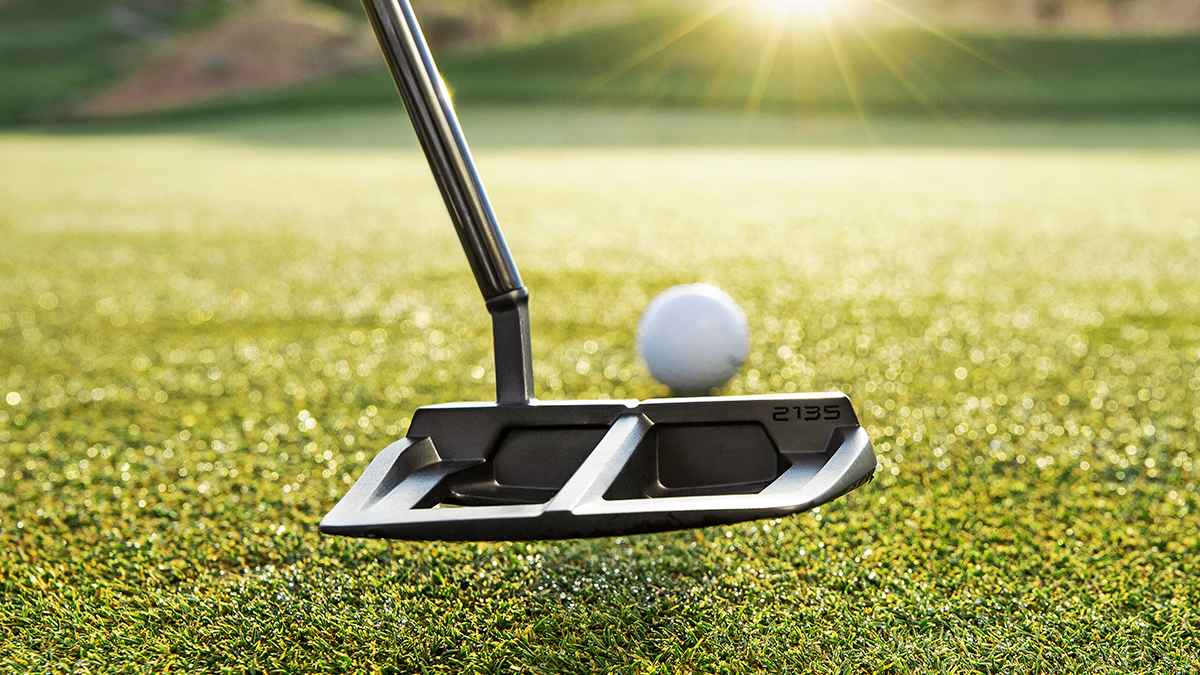Welcome to another edition of the Fully Equipped mailbag, sponsored by Cleveland/Srixon Golf, an interactive GOLF.com series in which we field your hard-hitting gear questions.
Should I buy a putter with or without toe hang? – London N., Texas
To make matters easy to understand, let’s first evaluate what toe hang is and why it’s important. When we talk toe hang, what we’re really talking about is a handful of variables—neck style, head shape and ultimately, the amount of weight positioned in the putter head. Specifically, how much or how little weight is in the toe section.
To see your putter’s toe hang, try holding your putter at the center of the balance point on the shaft on your finger and take notice of what direction the toe is pointing. Most blade-style putters have some measure of toe hang, meaning the toe points anywhere from straight down, at a 45-degree angle or somewhere around that.
The more the toe points down, the more toe hang it has. Mallets on the other hand are usually face-balanced, meaning the putter face rests horizontally with the putter face perpendicular to the ground. You can also find face-balanced blade-style putters and even some mallets with toe hang, but for the most part toe hang is predominantly found in blades and face-balancing is more common in mallet designs.
Ok, so what?
Well, the more toe hang a putter has, the more weight the putter has positioned on the putter’s toe side of the sweetspot. This is particularly useful for players who employ an arcing stroke, where the putterhead actually swings open on the backstroke and closes after contact on the forward stroke. The extra weight makes it easier to open and close the face while staying true to the arc you swing the putter on. Which speaking of arc, putters with more toe hang are better suited for strong arcing strokes. Putters with medium or even a light amount of toe hang are best utilized by putting strokes with small arcs.
Face-balanced putters are designed to assist golfers who opt not for an arcing stroke and instead favor a more straight-back and straight-through stroke. Now before we go any further, let’s clear the air a bit here. Because we swing the putter from the side and in a tilted circular motion, every putting stroke will have some amount of arc to it relative to the target line. You could mitigate this with some fancy wrist and arm work, but generally speaking, every stroke has some amount of arc. Face-balanced putters don’t necessarily eliminate the curve, rather what they do is help golfers lessen rotation of the putter face as they swing their putter head square to his/her natural arc.
Cleveland Frontline 4.0 putter
Knowing that, we still call it a “straight-back and straight-through stroke” because it’s a putting stroke that stays square and straight relative to the small arc the putter travels on.
Now, here’s where things get interesting.
If you have a tendency to pull your putts, opting for a putter with additional toe hang might help you improve your aim and lessen your propensity to pull it. If you tend to push your putts to the right, a toe hanging putter might exacerbate the problem by lagging behind too much on the forward stroke. This will make squaring the clubface difficult and if you don’t push it to the right, you’ll likely overcompensate and pull things sharply to the left.
If that sounds like you, face-balanced putters can help you roll your putts in the intended direction. Some putter manufacturers helpfully market their putters based on the type of stroke that will work best. Take Cleveland’s Frontline putters—you can find models designed for straight, slight and strong arcing strokes. As alluded to already, you can find toe hang in practically any putter shape, including some mallet designs. The latter is particularly useful for golfers who have some extra arc to their stroke who want the added MOI and alignment help that mallets can provide. All said, hear this: there’s no one answer. The best putter is the one that looks and feels best to your eye and to your stroke. This means looking for a putter that is pleasing to look at and that feels like it’s working in tandem with your natural motion.
Whether you prefer toe hang or face-balancing, it’s best you go through a putter fitting and leave the details for an expert to sort out the details and dial in the perfect for you. With putters, it’s easy to overanalyze your stroke and second-guess things, and some hard data from a fitting pro may be just what you need to become a more confident and competent putter.
Ready for an equipment overhaul? Find a fitting location near you at GOLF’s affiliate company True Spec Golf. For more on the latest gear news and information, check out our latest Fully Equipped podcast below.
